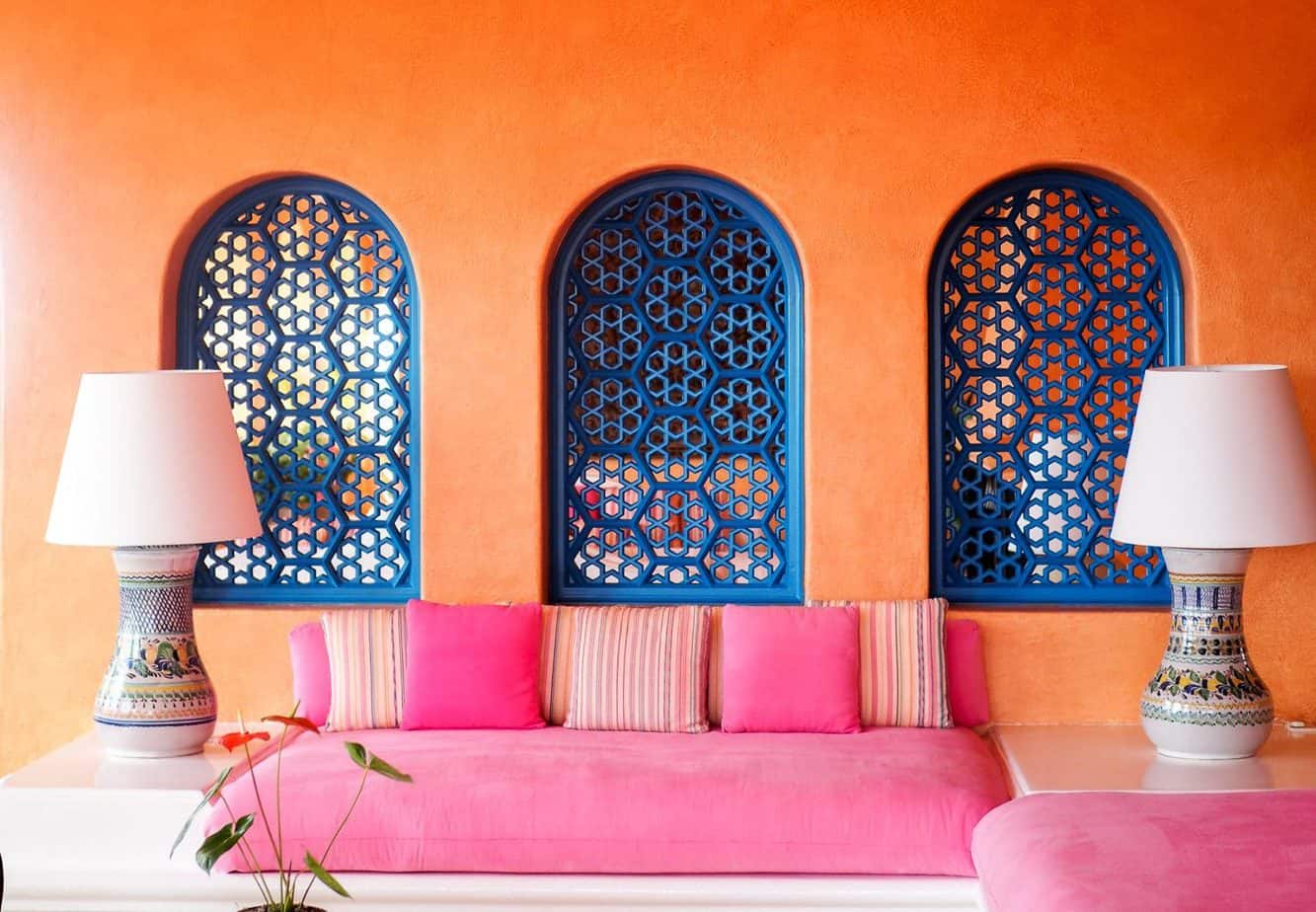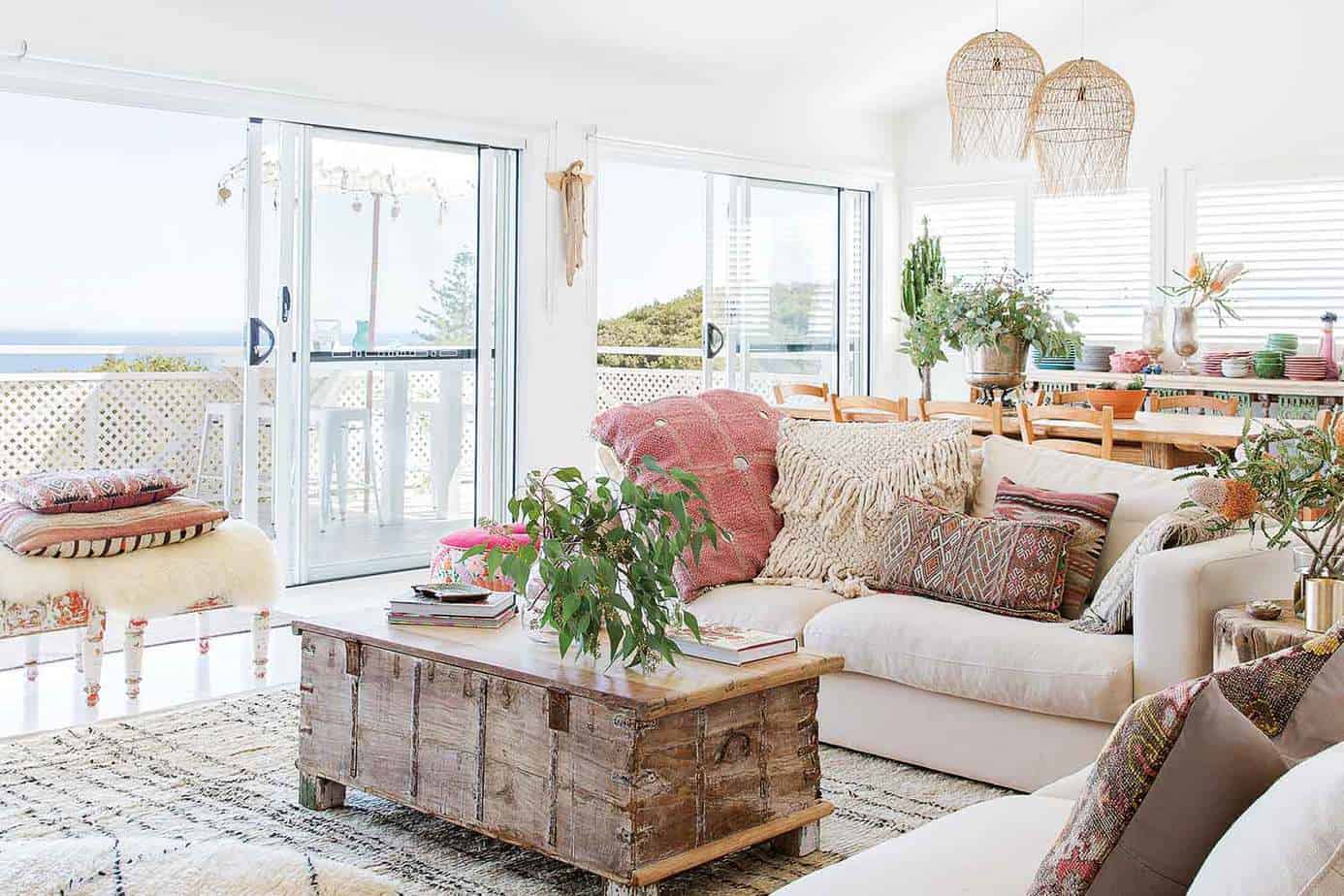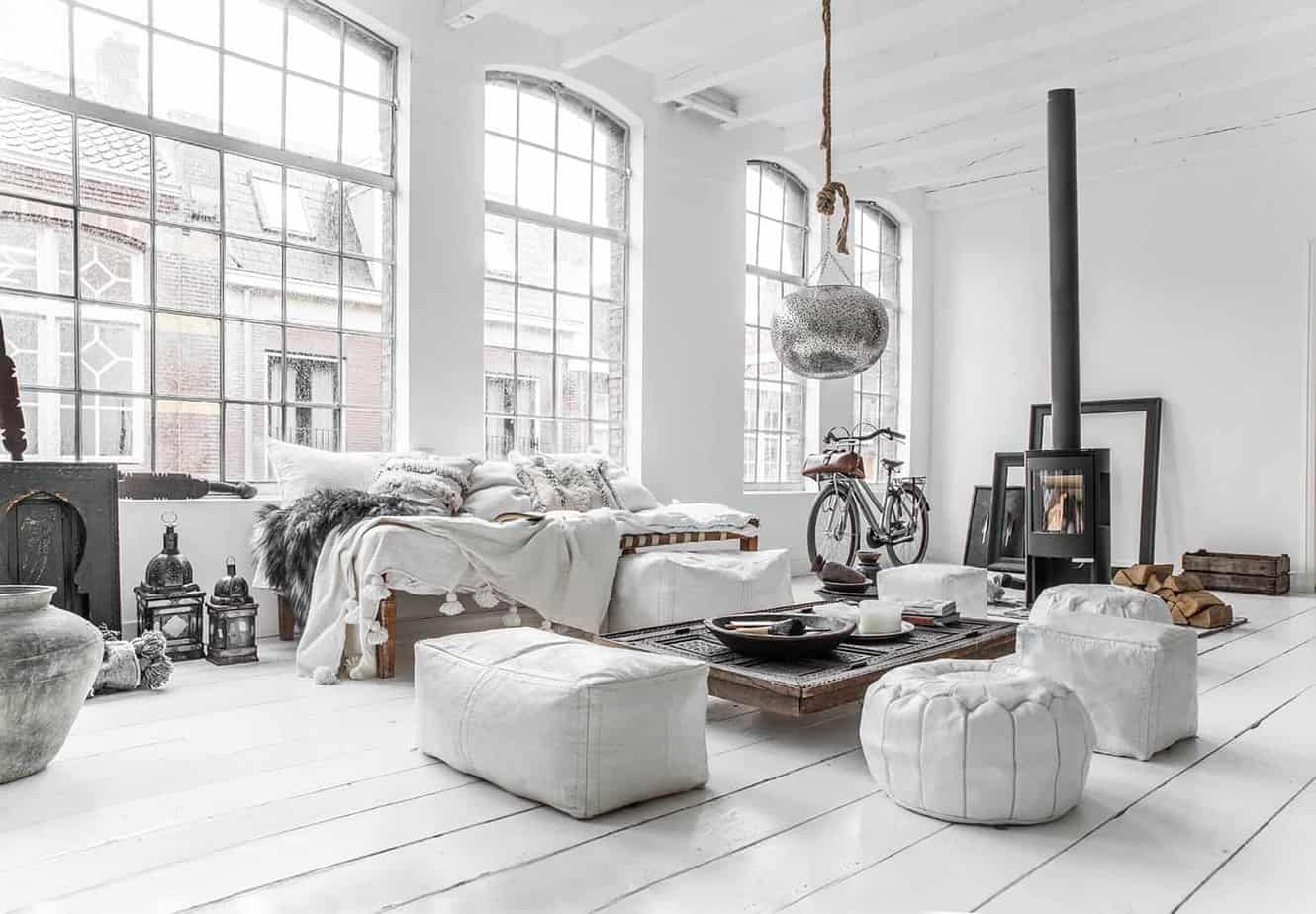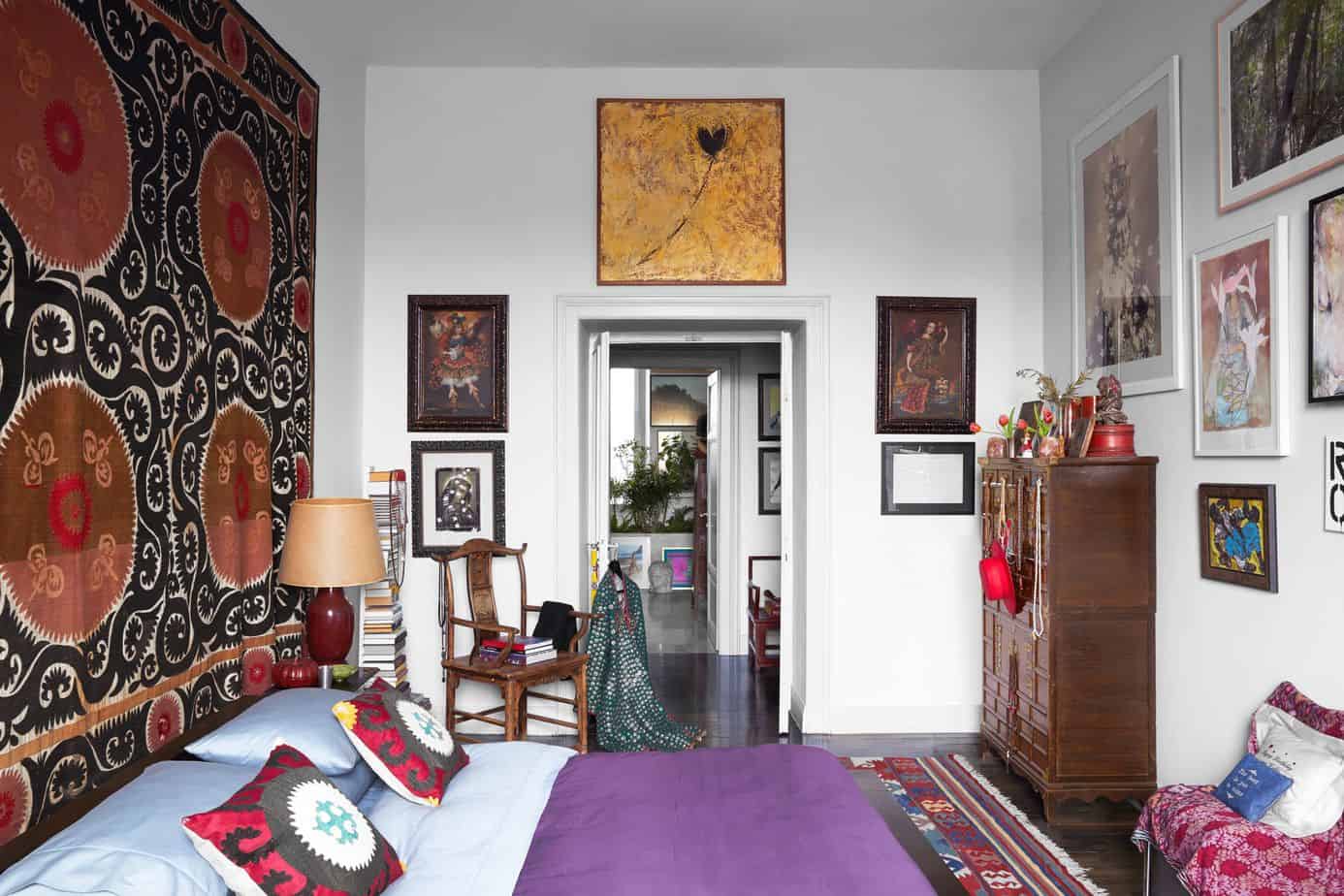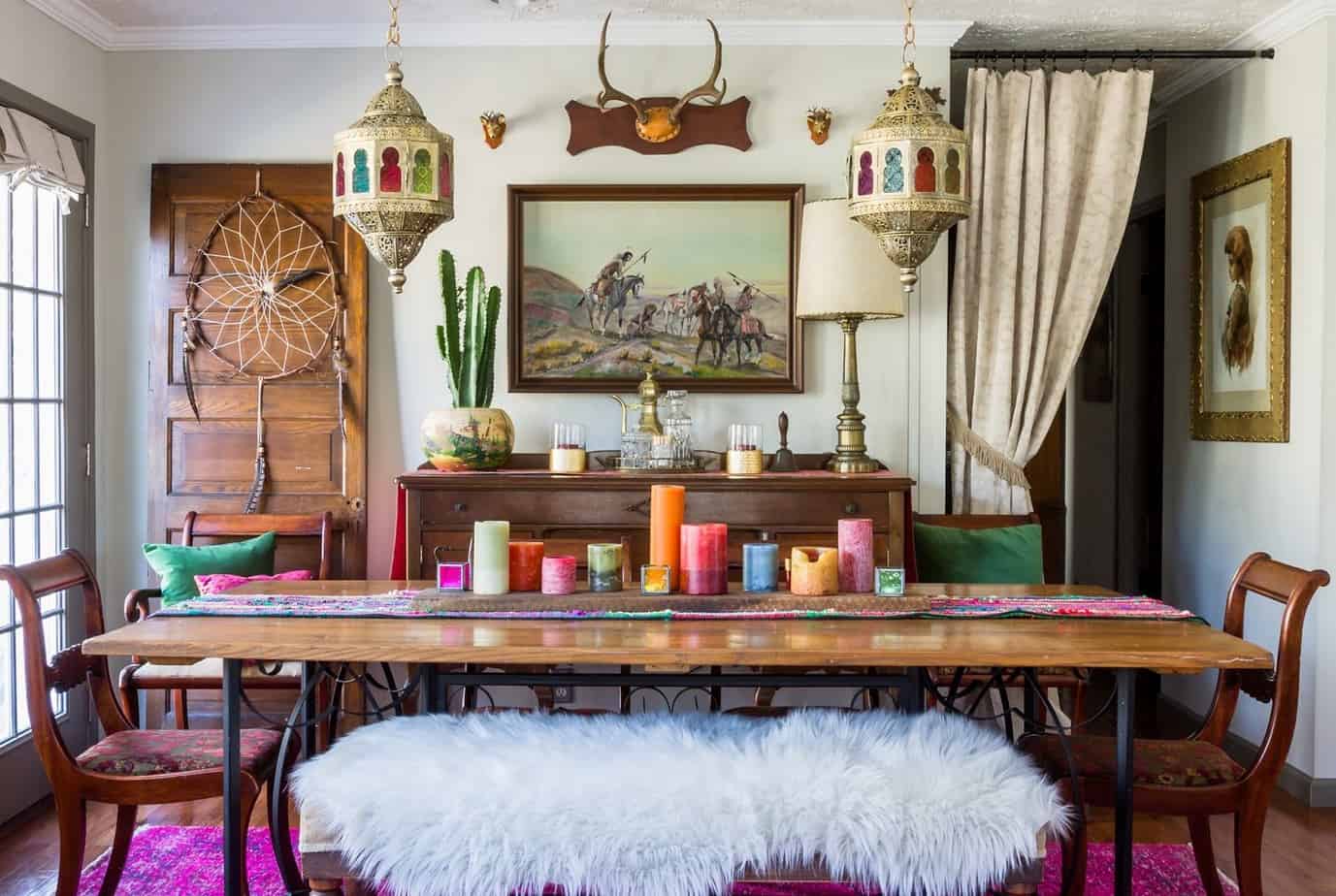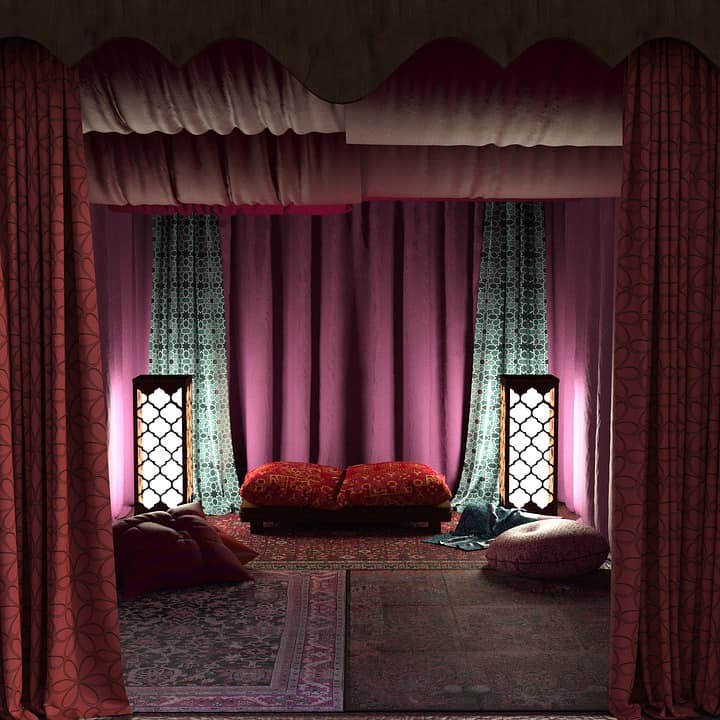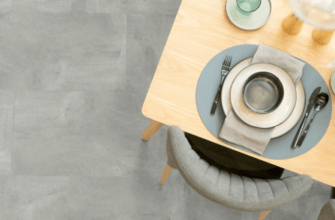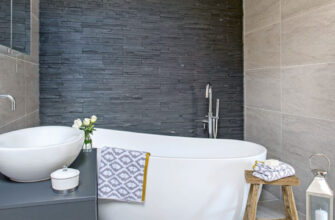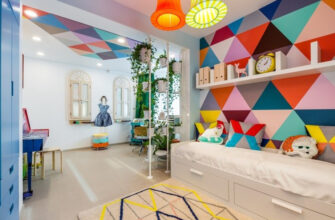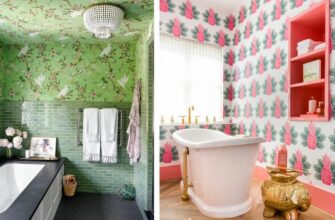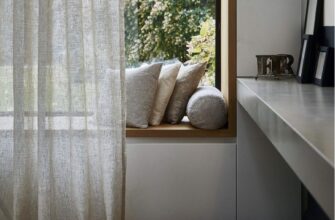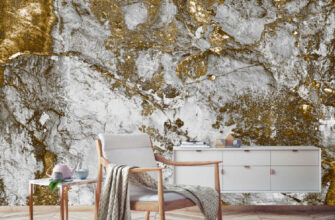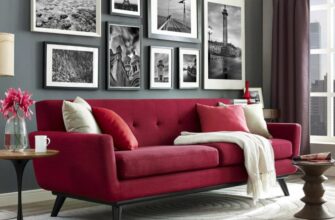Moroccan interior design is popular in many European countries. Like the country of Morocco itself, its ethnic design attracts with its originality.
Created by the mix of different cultures, this style has come to the liking of designers and decorators around the world because of its unpredictability.
Moroccan style came to us as a response to the refined purity of straight lines of modern interiors. We all wanted colors, complex combinations, textures and ornaments, reliefs and something that would be real, historical, and not new. But it did not look like antiques.
Surprisingly, modern interiors are just the perfect backdrop for Moroccan decor. And when we talk about Moroccan style, we do not mean the format of an Arab-French villa in the middle of the desert.
It might be a white studio in Mitino, but with mosaic lights, an ornate rug and stunning ethnic tableware.
By the way, in reality this style doesn’t even exist. There is, in fact, the Moorish style of the French colonies of North Africa.
And the local Arabs and Bedouins are exactly the people who make these incredibly beautiful trays, lamps and carpets and usually dislike sofas, kitchen sets and much more, without which we simply cannot imagine a modern interior.
- Two Directions of the Moroccan Style
- Moroccan Themed Rooms in Your House
- The Oriental Fairy Tale of Moroccan Interior Design
- The Color Palette of the Moroccan Style Decor
- Moroccan Style Furniture
- Moroccan Interior Design: Solutions for Walls, Floor and Ceiling
- Decor Elements in Moroccan House Design
- The Most Popular Decorative Components in Moroccan Interior Design
- Lamps in Moroccan Style Decor
- Moroccan Style Decor: Tips from Designers
- Tip 1
- Tip 2
- Tip 3
Two Directions of the Moroccan Style
Moroccan style fascinates with its multifaceted nature. It can be used to decorate the overall interior or as a highlight to add outlandish fell to the design. It is customary to divide the Moroccan style into two directions: Berber and Spanish-Moorish (Andalusian).
Andalusian or Spanish-Moorish is an awesome mix of the lavishness of Moorish palaces and laconic architecture borrowed from Spanish architects. The impact of Eastern and European cultures on this direction has brought about a number of contrary and variable combinations. So, Spanish-Moorish looks Bohemian for its fancy furnishings and architectural characteristics.
Berber – simple and laconic, slightly rude in execution. It is very different from the lush Spanish-Moorish.
For millennia, Berber art has been preserved in its original form. And even Muslim culture was not able to influence it.
Moroccan Themed Rooms in Your House
The Moroccan-style color scheme suggests choosing the colors of spices such as cinnamon, pepper, saffron, curry and fire sienna. This is a clear way to get an exotic “spicy” flavor from the interior. A cobalt blue accent will add a Moroccan feel to your ambiance.
If you don’t feel like re-plastering the walls, try a suede effect paint, fake paint effect, or even a mixture of a little building sand and paint for a really textured look.
You will have to use a variety of fabrics, including Persian rugs and carpets. Use bedspreads, tapestries and a variety of pillows in rich colors and patterns. For windows, choose light fabrics, draperies from the ceiling in the style of Bedouin awnings. The whole composition will look sensual and even luxurious!
Try wrought iron screens as room dividers, which are very typical of Moroccan interior design.
The Oriental Fairy Tale of Moroccan Interior Design
The walls are better to cover with Moroccan plaster (tadelakt), which is always distinguished by warm shades and allows you to create aristocratic, glossy surfaces.
But, if it is not possible to use tadelakt, as an alternative the walls can be painted in a uniform color or pasted over with suitable textured wallpaper, and decorated with a carved frieze at the junction with the ceiling.
Also, hand-painted, original Arabic patterns and ornaments are welcome on the walls of Moroccan interior design.
The ceiling is more often plastered, however, if it is high, it will be appropriate to decorate with wooden panels or coffered.
The floor in the Moroccan style is traditionally laid with mosaics. But you can also use ceramic tiles, parquet boards, parquet and laminate.
The Color Palette of the Moroccan Style Decor
Color is a very important part of Moroccan interior design. Inspiration is drawn from the beauty of the surrounding world: bright reds and oranges symbolize amazing African sunsets, cobalt and aquamarine conjure images of the Mediterranean Sea and the Atlantic, brown is the tone of the earth, and shimmering gold and silver will immediately remind you of the sands of the vast Sahara.
The color scheme of the style is a combination of warm tones of ocher, terracotta, sand, white with contrasting cobalt blue, ultramarine and emerald green. They choose red, purple as accents.
White is also quite common in Moroccan interiors and is an excellent backdrop for colorful accessories, as well as for silver or gold decor.
Moroccan Style Furniture
For Moroccan interior, it is suitable to use simple and laconic furniture. Special attention should be paid to the upholstery, which must correspond to the required color scheme and more often have a rough texture.
Cabinet furniture of modern style is quite appropriate in such an interior, for instance, sliding wardrobes.
When buying or ordering such a cabinet, it is important to take care of the color of the facade, which can, for example, blend in color with the wall decoration.
Bookcases, built-in wardrobes and shelves are also tricky. Wardrobes and bedside tables with lattice door facades and open shelves for decor will fit especially harmoniously into such an interior.
Kitchen sets and upholstered furniture of a palace style with decor in gold, silver and antiquity will also be appropriate. Again, the main thing is to choose the right color for the facades.
Moroccan furniture is renowned for its sophistication and attention to every detail. It can be adorned with wrought iron, intricate mosaics, or rich upholstery.
Moroccan Interior Design: Solutions for Walls, Floor and Ceiling
When you are planning a room where a Moroccan interior design will be created, the shape of the windows and doors are immediately decided.
It is accepted to recreate the dome of the mosque in Morocco, that is, the lancet or arched shape. This shape can be found in many other design constituents.
Finishing takes a significant role in Moroccan interiors. We can even say that it is the most essential.
There is a possibility to trace all the features of this style – mosaics, frescoes, that are all striking in their complexity and richness of ornament, floor decorations with natural stone or small tiles.
You can not hold back the flight of your imagination, as the Moroccan style is a mixture of East and West, so there can be a lot to include: patterned tiles on the floor, a bright silk carpet on top of it, walls finished with plaster and a breathtaking ceiling with paintings and mosaics. The decoration in such a room is reminiscent of the palaces of sheikhs and princes.
Decor Elements in Moroccan House Design
Morocco is popular for its handmade decor. You can find an incredible variety of products from craftsmen produced in Moroccan design. They are a must in the decor of Moroccan style.
Handmade cushions from cotton or silk, Moroccan wool rugs with geometric patterns and wedding blankets, leather ottomans, ethnic prints are all important elements of Moroccan decor.
Metal products are also of great importance – they are in the forms of mirrors, trays, teapots, vases, lamps and a lot of others.
If you are passionate about oriental motives, want something original, dream of creating a cozy and unique atmosphere in your home – choose the Moroccan style or, at least, add oriental details to your interior.
Ceramic dishes can be used to decorate the room, for example, alternating between elegant porcelain vases with rough clay jugs.
Mirrors and paintings should be placed in a luxurious baguette, colored glass inlay is welcome.
The walls can also be decorated with copper engravings, preferably with oriental motives. Handmade rugs and embroidered pillows are also welcome.
The Most Popular Decorative Components in Moroccan Interior Design
Here are the decoration elements that are frequently used in Moroccan interior design:
- Metal trays, dishes and vases with ornaments made in a brutal manner;
- Moroccan mosaics used for floors, walls, patios and pools, back splash and counter-tops, bathroom and hammam finishes;
- Moroccan ornaments for textiles;
- Carpets, rugs and pillows;
- Ottomans, which are very fond of fashion bloggers and interior designers;
- Moroccan lamps.
Lamps in Moroccan Style Decor
The types of Moroccan lamps include:
- openwork metal;
- mosaic glass;
- glass on a metal frame.
They all look very original and beautiful. Mosaic are most suitable for a light interior; they usually work as a bright accent. Openwork metal looks good in interiors with warm, rich colors. Glass on a metal frame will go with anything.
Moroccan Style Decor: Tips from Designers
Tip 1
Apply hyper-colorful and moderately bright shades in your interior design.
The color scheme consisting of calm and slightly muted tones is perfect for this style.
With the background of white walls, dark wood products, black forged furniture, terracotta carpets, beautiful inlays of pearl, amber, brass, as well as small mosaic tiles look contrasting, but at the same time very harmonious.
Tip 2
A distinctive feature of the Moroccan style is handmade earthenware. It is customary to put it in typical wall shelves or hang it on the walls.
You can put beautifully designed big vases on the floor.
The vases can be covered with leather, in bone and brass. Carved wood and hammered copper plates and dishes darken the edges for an antiquity effect.
Tip 3
An indispensable attribute of the style are the chests decorated with wooden carvings, paintings and wrought-iron patterns.
They can be quite small and resemble a jewelry box, or they can reach quite impressive sizes and be placed on shelves, on the shelves or directly on the floor.


